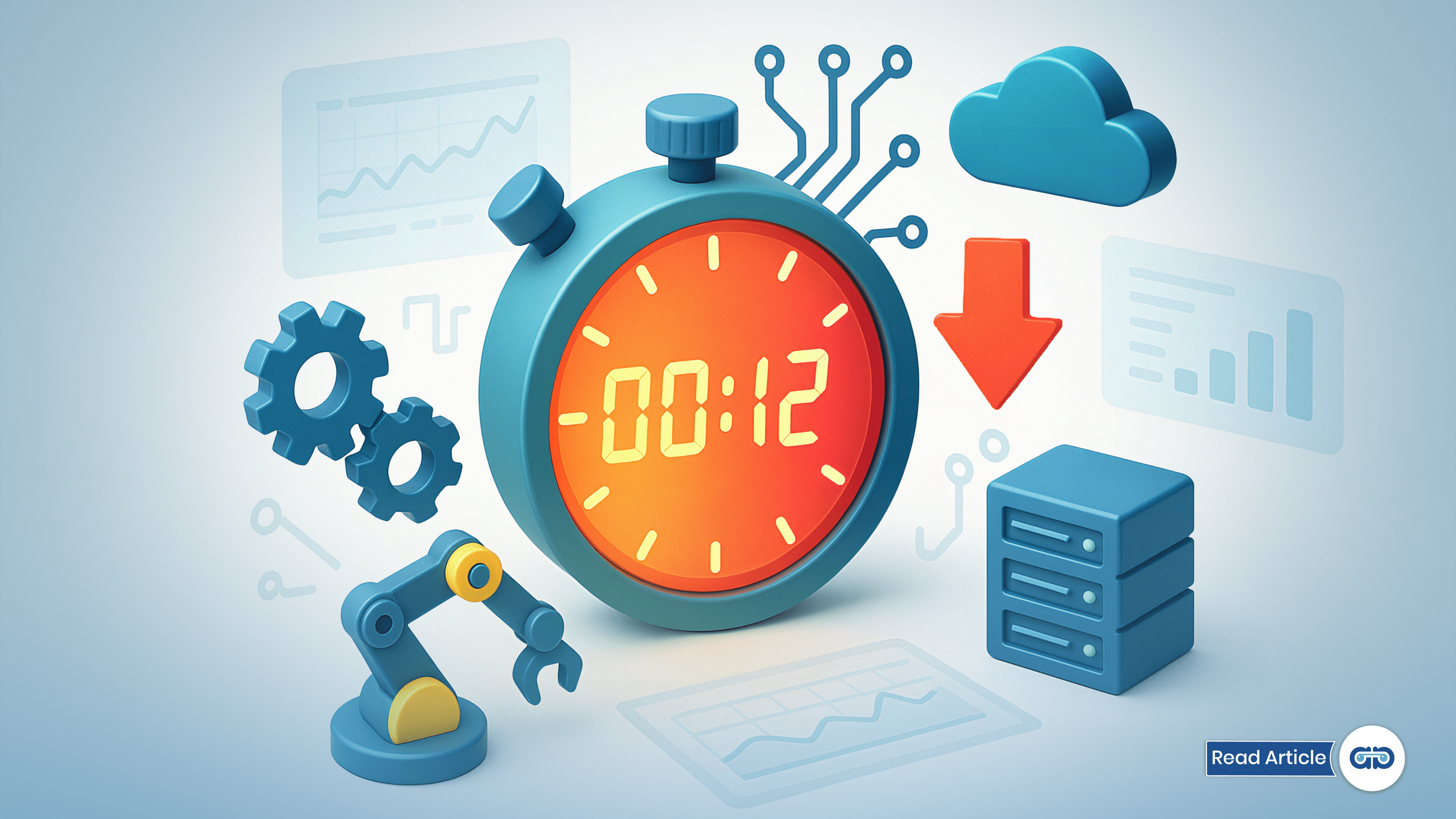Mean Time to Resolution (MTTR) is one of the most critical metrics in SaaS operations. It defines how quickly a business can restore normal service after an incident. High MTTR directly impacts customer trust, churn rates, and operational costs.
Traditional manual handling slows response cycles, while basic L1 automation only addresses low-complexity, repetitive issues. The significant reduction in MTTR comes from L2 automation, where more advanced, contextual, and diagnostic automation capabilities operate.
This blog explains how L2 automation lowers MTTR in SaaS operations, covering its mechanics, implementation, and practical use cases.
MTTR in SaaS Operations
MTTR measures the average time required to resolve incidents once detected. In SaaS environments, where uptime and user experience are tightly linked to revenue, every second of downtime carries financial and reputational costs.
Components of MTTR
- Detection Time: Identifying the incident occurrence
- Diagnosis Time: Determining root cause and scope
- Repair Time: Applying fixes or mitigations
- Recovery Time: Restoring service to expected performance levels
L1 automation can accelerate detection and repair for simple issues. However, complex incidents that involve diagnosis and orchestration require L2 automation.
The Role of L2 Automation in MTTR Reduction
L2 automation goes beyond script execution. It uses correlation, context, and cross-system workflows to accelerate diagnosis and resolution.
L2 automation compresses the slowest part of MTTR, analysis and remediation, by automating the middle layer of operational complexity.
Main Functions that Reduce MTTR
- Automated Diagnostics: Event correlation and log analysis isolate root causes faster than manual investigation.
- Proactive Remediation: Automated workflows detect degradation signs and apply corrective measures before full outage.
- Intelligent Triage: Incidents are categorized and prioritized automatically, avoiding delays in routing.
- Cross-System Orchestration: Automated fixes span databases, APIs, and services without waiting for multi-team coordination.
Key Use Cases of L2 Automation for MTTR Reduction
L2 automation handles complex IT tasks that require correlation, diagnostics, or orchestration, bridging the gap between routine automation and expert intervention. Its main goal is to reduce mean time to resolution (MTTR) by accelerating detection, analysis, and remediation across SaaS environments.
1. Incident Correlation and Root Cause Analysis
In SaaS environments with multiple microservices, a single database error may trigger hundreds of alerts. L2 automation correlates these events, suppresses noise, and isolates the true failure source. This shortens diagnosis time from hours to minutes.
2. Automated Remediation of API Failures
When integrations between SaaS applications fail, L2 automation retries failed API calls after verifying endpoint stability. It can automatically switch to backup endpoints if primary ones remain down. This prevents long outages tied to manual intervention.
3. Capacity and Performance Scaling
If user demand spikes, SaaS applications risk performance degradation. L2 automation triggers cloud resource scaling, rebalancing workloads automatically. This avoids prolonged downtime caused by resource bottlenecks.
4. Security Event Containment
Suspicious login patterns or unusual data transfer volumes often require immediate containment. L2 automation can quarantine affected accounts or isolate workloads while alerting security teams, reducing potential impact and resolution cycles.
5. Patch Deployment and Rollback
Service degradation due to unpatched vulnerabilities can escalate MTTR. L2 automation performs controlled patching with automated validation. If issues arise, rollback workflows restore the previous stable state without manual delay.
Benefits of L2 Automation in Reducing MTTR
L2 automation addresses complex IT tasks that go beyond simple repetitive actions. It bridges the gap between basic automation and full human intervention, accelerating incident resolution and enhancing overall system reliability.
1. Faster Diagnosis
Automated event correlation eliminates redundant alerts, ensuring engineers focus directly on the real issue.
2. Reduced Human Bottlenecks
Automation handles initial triage, data gathering, and standard remediation, minimizing dependency on manual availability.
3. Consistent Recovery Actions
Predefined automated playbooks ensure response speed is consistent across shifts and geographies.
4. Proactive Service Stability
By predicting and preventing outages through automated checks and remediation, L2 automation reduces the number of high-MTTR incidents.
5. Measurable Operational Gains
MTTR reductions translate into increased uptime, reduced SLA penalties, and improved customer retention.
Implementation Challenges
Implementing L2 IT automation in SaaS environments presents challenges that go beyond simple task automation. These obstacles arise from the need to coordinate complex workflows, integrate diverse data sources, and manage organizational and operational risks effectively.
1. Workflow Complexity
L2 automation requires building contextual workflows that integrate across diverse SaaS platforms, making design non-trivial.
2. Data Integration Gaps
Root cause automation relies on consolidated monitoring data. Incomplete or siloed logging prevents accurate automation.
3. Change Resistance
IT teams accustomed to manual processes may resist automated handling of diagnostics and remediation.
4. Risk Management
Poorly designed L2 workflows may trigger incorrect remediation, escalating the problem. Strong testing and validation pipelines are mandatory.
Long-Term Outlook
As SaaS businesses scale, MTTR targets will tighten under customer SLAs. Manual methods and basic L1 automation cannot keep pace with the complexity of hybrid and multi-cloud environments. L2 automation will become the operational baseline for SaaS companies that aim to deliver continuous availability and reliability at scale. Organizations that build automation maturity now will establish competitive advantage by reducing downtime costs and enhancing trust.

